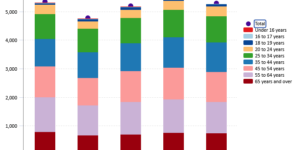Bloomberg LP customers, including the U.S. Federal Reserve and the U.S. Treasury, were examining on Saturday whether there could have been leaks of confidential information, even as the media company restricted its reporters’ access to client data and created a position to oversee compliance in a bid to assuage privacy concerns.
The financial data and news company, whose computer terminals are widely used on Wall Street, had allowed journalists to see some information about terminal usage, including when customers had last logged in, and how often they used messaging or looked up data on broad categories, such as equities or bonds.
Bloomberg CEO Daniel Doctoroff said in a statement on Friday that the firm restricted reporters’ access last month after a client complained.
The client, Goldman Sachs Group Inc, flagged the matter to Bloomberg after a news service reporter in Hong Kong asked the bank about a partner’s employment status, noting the person had not logged on in some time. Goldman found that journalists had access to far more information than the bank had known, and argued the information was sensitive and should not be seen by reporters.
“Having recognized this mistake, we took immediate action,” Doctoroff said in the statement posted on Bloomberg’s blog. He said the company had created a position of client data compliance officer to ensure its news operations never have access to confidential customer data. He added that even under the previous policy, Bloomberg reporters could not see which particular news stories clients read, or the specific securities they viewed. Bloomberg has about 2,400 journalists worldwide.
While some said the concerns were overstated, the news triggered fears about privacy of sensitive data at Wall Street firms such as Goldman Sachs and JPMorgan Chase & Co as well as at the Fed and some U.S. government departments that use Bloomberg terminals.
A Fed spokeswoman said on Saturday that “we are looking into this situation and have been in touch with Bloomberg to learn more.” A source briefed on the situation said the Treasury Department was looking into the question as well.
Senior Goldman executives argued that while the information Bloomberg reporters had was limited, a trader could easily make money just by knowing what type of securities some high-profile users were looking at, or what questions a government official raised with Bloomberg’s help desk, people with direct knowledge of their views said.
They also began to worry about who else had access to such information. The issue made people inside the bank uncomfortable even with Bloomberg’s marketing and sales team’s access to information, they said.
For instance, if a trader pulls up quotes for a certain type of security several times, sometimes a message pops up from Bloomberg customer support staff offering other products and functions that might be useful. While this was once seen as a common practice, it has started to make traders uncomfortable about who has access to their personal information, the sources said.
Bloomberg pointed to Doctoroff’s statement on Friday and declined to comment further.
Privately held Bloomberg gets the bulk of its revenue from terminal sales to financial institutions. The company has more than 315,000 terminal subscribers globally, with each Bloomberg terminal costing more than $20,000 a year. Last year, it posted revenue of $7.9 billion.
A person briefed on the situation at Bloomberg said on Friday that no Bloomberg clients had so far canceled their subscriptions because of the issue.
John Brynjolfsson, chief investment officer of hedge fund Armored Wolf, said the concerns were overblown.
“Everyone, with a single brain cell, personally assesses the tension between their privacy and their productivity,” Brynjolfsson said. “Some I know keep their Bloomberg – and life more generally – locked down, so people can’t even find their name to message them. They give their ID to those they want.”
Thomson Reuters, the parent of Reuters News, competes with Bloomberg. In a statement, Thomson Reuters said its news division operates “completely independently with reporters having no access to non-public data on its customers, especially any data relating to its customers’ use of its products or services.
“Thomson Reuters collects and analyses customer data to improve product functionality and customer experience. No Reuters news staff have access to any of this data. There are strict controls in place that limit the access of this information amongst other Thomson Reuters staff,” the company said.
At Goldman Sachs and other big clients including JPMorgan, the level of information Bloomberg reporters had access to deeply troubled executives, who were stunned to learn that what they considered sensitive financial information could become public, sources with direct knowledge of discussions inside the firms said.
After the Bloomberg reporter in Hong Kong approached the bank in April, Goldman representatives took up the issue with Bloomberg editors and executives of the company, including Doctoroff. Goldman staff also called former Bloomberg journalists to find out whether the practice of using clients’ login information was common, and to find out precisely what journalists could see, these sources said.
At JPMorgan, the bank’s public relations staffers also fumed to one another last year that reporters called repeatedly to inquire whether Bruno Iskil, the “London Whale” trader who was part of a team that lost more than $6 billion in losses, had left the bank because he had not logged onto his terminal in several days, a source with direct knowledge of these discussions said.
JPMorgan did not formally bring the matter to Bloomberg’s attention, the source said. Bloomberg said it had no record of a complaint.
Bloomberg’s terminal has various command codes that with the click of a few buttons allow users to look up news about specific companies or topics, and data on specific securities or broader markets. Subscribers can also see information on fellow Bloomberg users, such as phone numbers, work titles, email and Bloomberg messaging addresses. Inside Bloomberg, some employees have access to much more detailed and current user data, for sales and marketing purposes.
Journalists had access to some of that information, but not all of it.





















 Surviving the ‘Silver Tsunami’: Closing the Talent, Skills Gap in Underwriting
Surviving the ‘Silver Tsunami’: Closing the Talent, Skills Gap in Underwriting  2025 Underwriting Profit and ‘Shop-a-Palooza’ Predicted for Auto Insurance
2025 Underwriting Profit and ‘Shop-a-Palooza’ Predicted for Auto Insurance  Viewpoint: Strategies for Brokers as M&A Slows and Insurance Rates Soften
Viewpoint: Strategies for Brokers as M&A Slows and Insurance Rates Soften  Reporter’s Notebook: ‘Nobody Else Does Telematics,’ Lemonade Exec Says
Reporter’s Notebook: ‘Nobody Else Does Telematics,’ Lemonade Exec Says 





